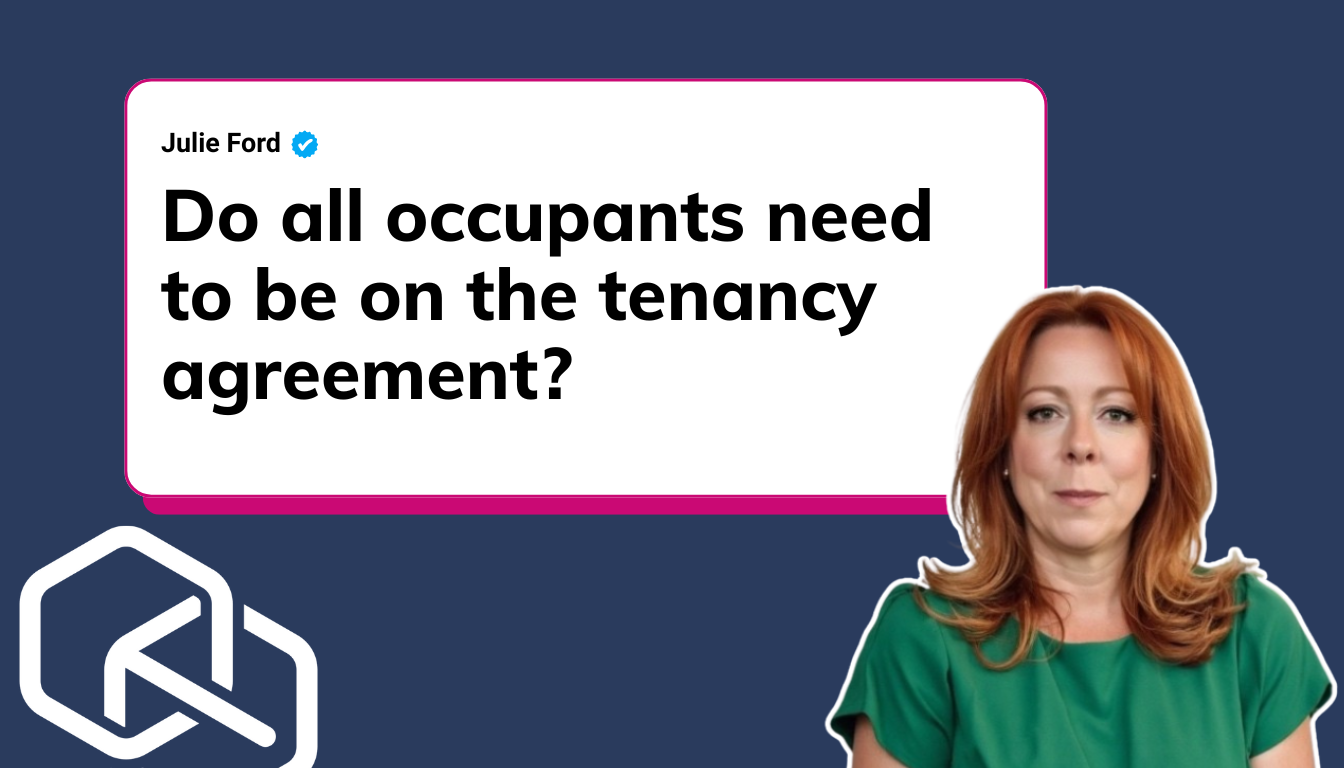Understanding the Difference Between Tenants and Permitted Occupiers
You’d be surprised how often this question comes up:
“Does every person living in the rental property need to be named on the tenancy agreement?”
At first glance, the answer feels like it should be simple. But in reality, it’s not so black and white, and the reason is this: not everyone who lives in a rental property is legally considered a tenant.
Let’s take a common example: a couple rents a home. One of them works full-time and pays the rent; the other stays at home to raise the children and doesn’t contribute financially. In many cases, only one partner is named on the tenancy agreement. The other, while living there full-time, isn’t legally a tenant; they’re classed as a permitted occupier.
So what does that actually mean?
Tenants vs. Permitted Occupiers: What’s the Difference?
A tenant is someone who holds the legal right to live in the property. They’re named on the tenancy agreement and are responsible for paying rent, maintaining the home, and upholding all terms of the lease. They also have security of tenure, meaning they’re protected from eviction unless a legal process is followed.
A permitted occupier, on the other hand, is someone who has been given permission to live in the property, but they’re not legally responsible for the tenancy. They don’t pay rent, they’re not bound by the same obligations, and they don’t have the same protections. In short, they live there with the tenant’s and landlord’s agreement, but not under a formal legal contract.
Permitted occupiers have no right to remain in the property if the named tenant moves out or is evicted. And because they’re not tenants, the landlord can’t legally pursue them for unpaid rent, nor do they need to go through a formal eviction process to remove them.
So, who should be on the tenancy agreement?
As a general rule, it’s in the landlord’s best interest to clearly list everyone living in the property, whether they’re a tenant or not.
The best approach?
- List all tenants (i.e. those responsible for the rent and the lease) in the main body of the tenancy agreement.
- Then, include a separate section titled “Permitted Occupiers”, where you name any other adults who will be living in the home but aren’t legally bound by the tenancy.
This clear distinction does two things:
- It protects the landlord from ambiguity around rent responsibility and legal rights.
- It helps ensure clarity when it comes to possession notices and potential legal proceedings.
Why It Matters More Than You Think
There are a few reasons why naming all occupants, even permitted occupiers, is more than just good admin.
First, some landlord insurance policies require that all residents be declared. If someone is living in the property and isn’t named in the tenancy or as a permitted occupier, it could invalidate your insurance in the event of a claim.
Second, when it comes time to serve a possession notice, the process can get messy if not everyone is listed. If only the tenant is named and a permitted occupier remains in the property after an eviction, it can delay proceedings and complicate the bailiff process. A properly worded notice, addressed to all adults living at the property, is essential.
And finally, here’s a small but crucial legal point, even though permitted occupiers aren’t tenants, landlords in England must still carry out Right to Rent checks on them if they are 18 years or older. Skipping this can lead to fines or worse, especially in light of the government’s stricter immigration compliance requirements.
Not all occupants need to be tenants, but every occupant should be named somewhere in your tenancy documentation. Whether as a tenant or permitted occupier, clarity is your best protection as a landlord.
So next time you’re drafting a tenancy agreement or taking on new tenants, ask the right question:
“Who will be living in the property, and what’s their role?”
Then make sure the paperwork reflects that, because in property management, it’s always better to be precise than to make assumptions.
Understanding the Difference Between Tenants and Permitted Occupiers
You’d be surprised how often this question comes up:
“Does every person living in the rental property need to be named on the tenancy agreement?”
At first glance, the answer feels like it should be simple. But in reality, it’s not so black and white, and the reason is this: not everyone who lives in a rental property is legally considered a tenant.
Let’s take a common example: a couple rents a home. One of them works full-time and pays the rent; the other stays at home to raise the children and doesn’t contribute financially. In many cases, only one partner is named on the tenancy agreement. The other, while living there full-time, isn’t legally a tenant; they’re classed as a permitted occupier.
So what does that actually mean?
Tenants vs. Permitted Occupiers: What’s the Difference?
A tenant is someone who holds the legal right to live in the property. They’re named on the tenancy agreement and are responsible for paying rent, maintaining the home, and upholding all terms of the lease. They also have security of tenure, meaning they’re protected from eviction unless a legal process is followed.
A permitted occupier, on the other hand, is someone who has been given permission to live in the property, but they’re not legally responsible for the tenancy. They don’t pay rent, they’re not bound by the same obligations, and they don’t have the same protections. In short, they live there with the tenant’s and landlord’s agreement, but not under a formal legal contract.
Permitted occupiers have no right to remain in the property if the named tenant moves out or is evicted. And because they’re not tenants, the landlord can’t legally pursue them for unpaid rent, nor do they need to go through a formal eviction process to remove them.
So, who should be on the tenancy agreement?
As a general rule, it’s in the landlord’s best interest to clearly list everyone living in the property, whether they’re a tenant or not.
The best approach?
- List all tenants (i.e. those responsible for the rent and the lease) in the main body of the tenancy agreement.
- Then, include a separate section titled “Permitted Occupiers”, where you name any other adults who will be living in the home but aren’t legally bound by the tenancy.
This clear distinction does two things:
- It protects the landlord from ambiguity around rent responsibility and legal rights.
- It helps ensure clarity when it comes to possession notices and potential legal proceedings.
Why It Matters More Than You Think
There are a few reasons why naming all occupants, even permitted occupiers, is more than just good admin.
First, some landlord insurance policies require that all residents be declared. If someone is living in the property and isn’t named in the tenancy or as a permitted occupier, it could invalidate your insurance in the event of a claim.
Second, when it comes time to serve a possession notice, the process can get messy if not everyone is listed. If only the tenant is named and a permitted occupier remains in the property after an eviction, it can delay proceedings and complicate the bailiff process. A properly worded notice, addressed to all adults living at the property, is essential.
And finally, here’s a small but crucial legal point, even though permitted occupiers aren’t tenants, landlords in England must still carry out Right to Rent checks on them if they are 18 years or older. Skipping this can lead to fines or worse, especially in light of the government’s stricter immigration compliance requirements.
Not all occupants need to be tenants, but every occupant should be named somewhere in your tenancy documentation. Whether as a tenant or permitted occupier, clarity is your best protection as a landlord.
So next time you’re drafting a tenancy agreement or taking on new tenants, ask the right question:
“Who will be living in the property, and what’s their role?”
Then make sure the paperwork reflects that, because in property management, it’s always better to be precise than to make assumptions.








